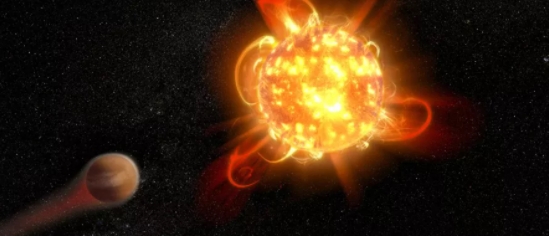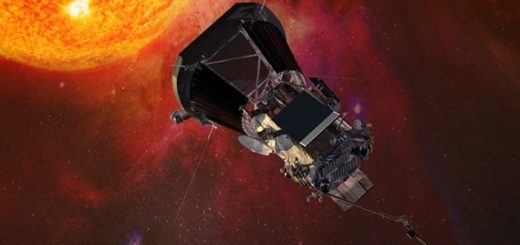‘Superflares’ may make it hard for life to begin around dwarf stars

These powerful stellar eruptions pour out huge amounts of UV radiation.
Powerful stellar eruptions could pose a serious challenge to the origin and evolution of life around the universe, a new study suggests.
Such outbursts throw off large amounts of ultraviolet (UV) radiation, which is not only directly harmful to life as we know it but can also strip away the atmospheres of relatively close-orbiting planets. These issues are especially pronounced for worlds circling red dwarfs, small and dim stars that make up about 75% of the Milky Way galaxy’s stellar population.
For starters, red dwarfs are more active than sunlike stars, especially when they’re young. And, because each red dwarf is so dim, its “habitable zone” — the range of orbital distances where liquid water could be stable on a world’s surface — is much closer-in than for a star such as our sun.
The new study helps flesh out this skeletal outline. Researchers calculated the likely UV emissions generated by red-dwarf superflares, as well as the radiation loads absorbed by rocky planets that might reside in the small stars’ habitable zones.
“We found planets orbiting young stars may experience life-prohibiting levels of UV radiation, although some micro-organisms might survive,” study lead author Ward Howard, a doctoral student in the Department of Physics and Astronomy at the University of North Carolina (UNC), Chapel Hill, said in a statement.
Howard and his colleagues measured the temperatures of 42 superflares emitted by 27 red dwarfs. They did so by analyzing observations made simultaneously by the Evryscope, an array of small telescopes at the Cerro Tololo Inter-American Observatory in Chile, and NASA’s Transiting Exoplanet Survey Satellite, which has been hunting for alien worlds from Earth orbit since 2018.
These observations were obtained every 2 minutes, allowing the scientists to get a detailed temperature profile across the brief life of the red-dwarf superflares, which typically emit most of their UV radiation during a 10- to 15-minute-long peak. Temperature is strongly correlated with UV emission, so the researchers were then able to estimate the radiation loads imposed by the outbursts.
The new information could aid a variety of other astrobiological investigations going forward, team members said.
Click here for more Space.com videos…
“Longer term, these results may inform the choice of planetary systems to be observed by NASA’s James Webb Space Telescope based on the system’s flaring activity,” study co-author Nicholas Law, an associate professor of physics and astronomy at UNC-Chapel Hill and the Evryscope principal investigator, said in the same statement.
The new study continues the team’s ongoing investigation into red-dwarf flaring and its potential impacts on life. For example, a 2018 paper led by Howard suggested that superflares have dimmed the astrobiological potential of Proxima b, a rocky, Earth-size world that orbits in the habitable zone of the red dwarf Proxima Centauri, the sun’s nearest stellar neighbor.



 Creators of mankind
Creators of mankind Description of “Tall white aliens”
Description of “Tall white aliens” Where they came from?
Where they came from? About hostile civilizations
About hostile civilizations The war for the Earth
The war for the Earth “Tall white aliens” about eternal life
“Tall white aliens” about eternal life Video: “Nordic aliens”
Video: “Nordic aliens” Aliens
Aliens Alien encounters
Alien encounters The aliens base
The aliens base UFO
UFO Technology UFO
Technology UFO Underground civilization
Underground civilization Ancient alien artifacts
Ancient alien artifacts Military and UFO
Military and UFO Mysteries and hypotheses
Mysteries and hypotheses Scientific facts
Scientific facts


















